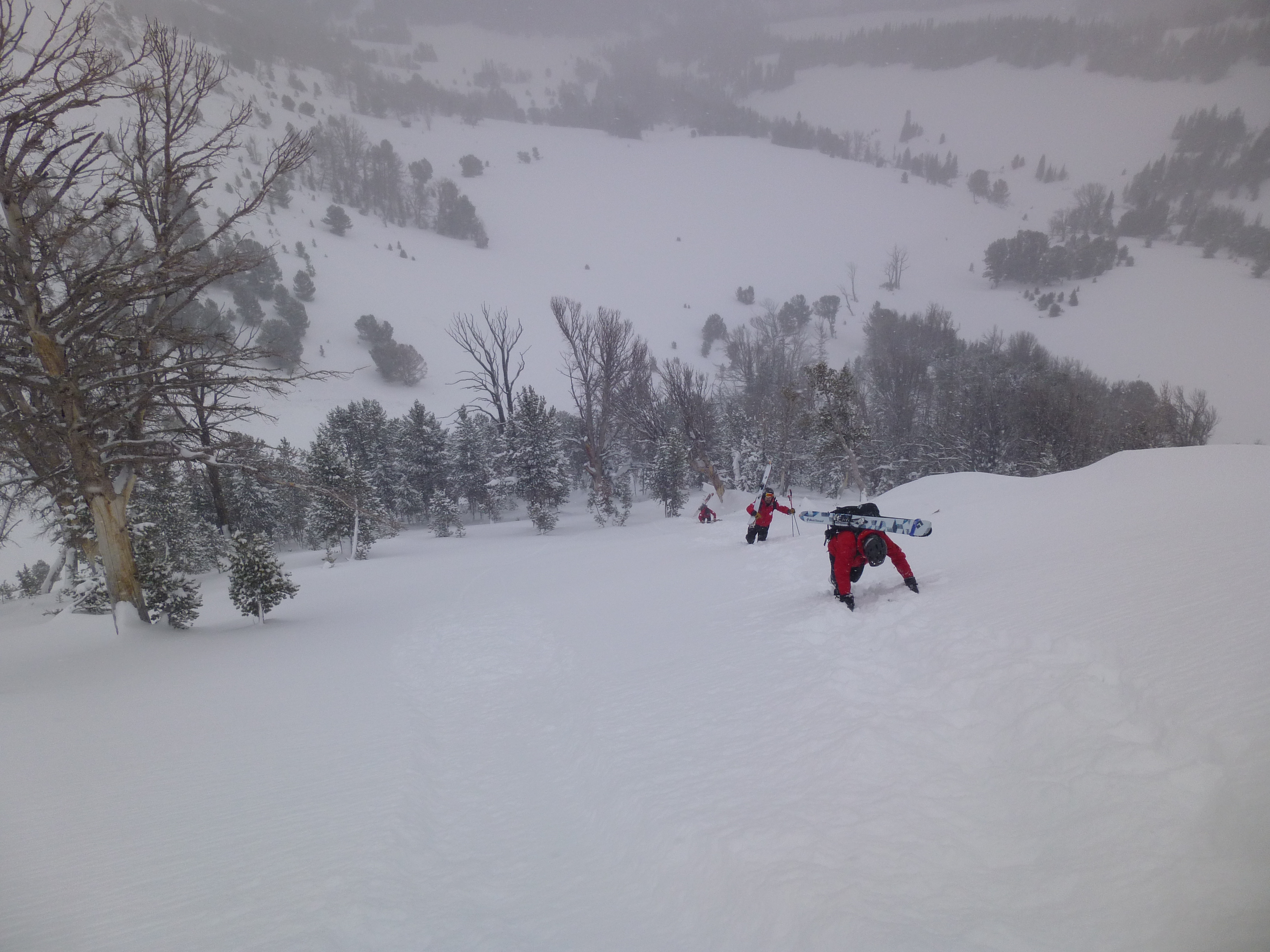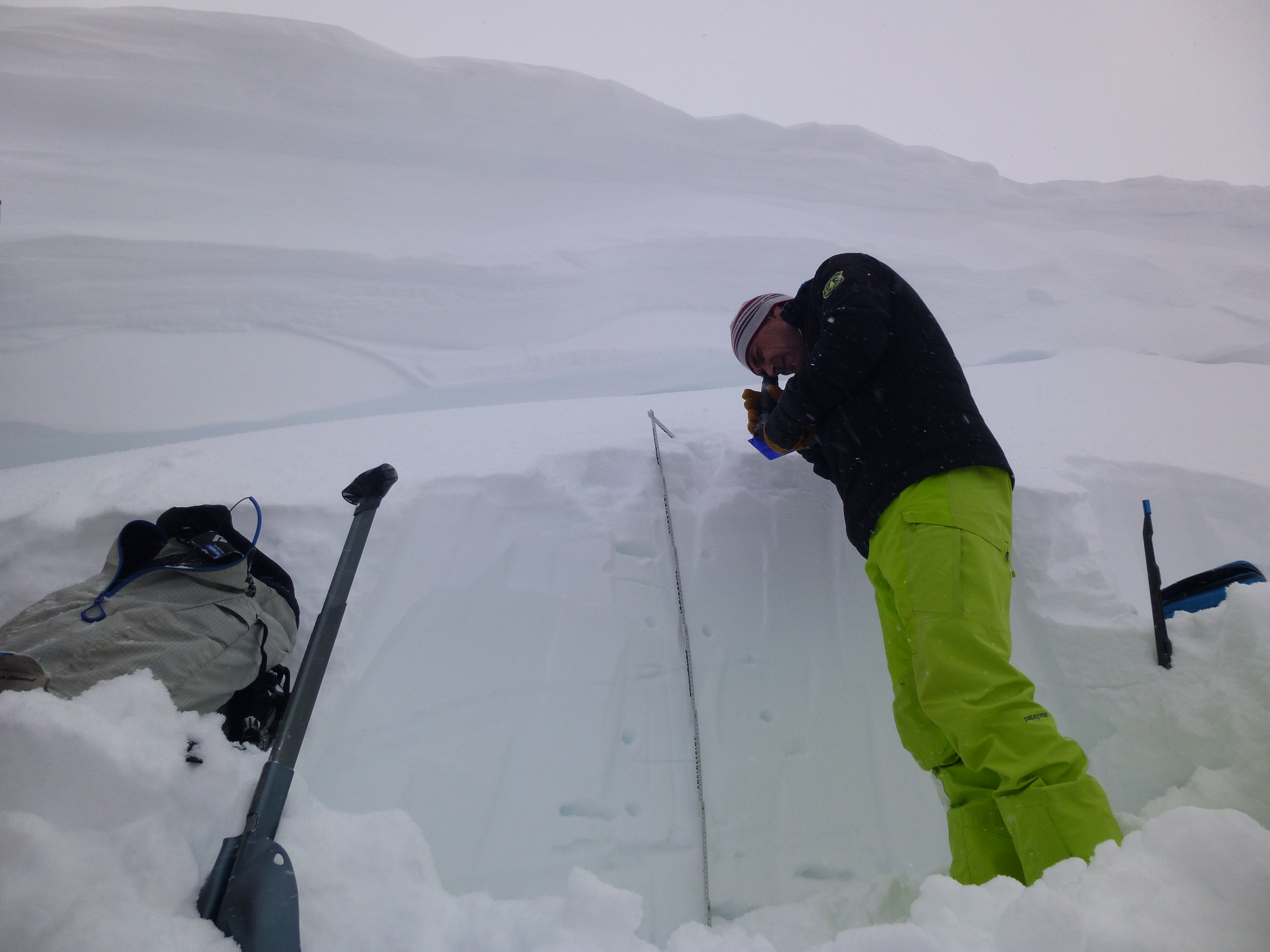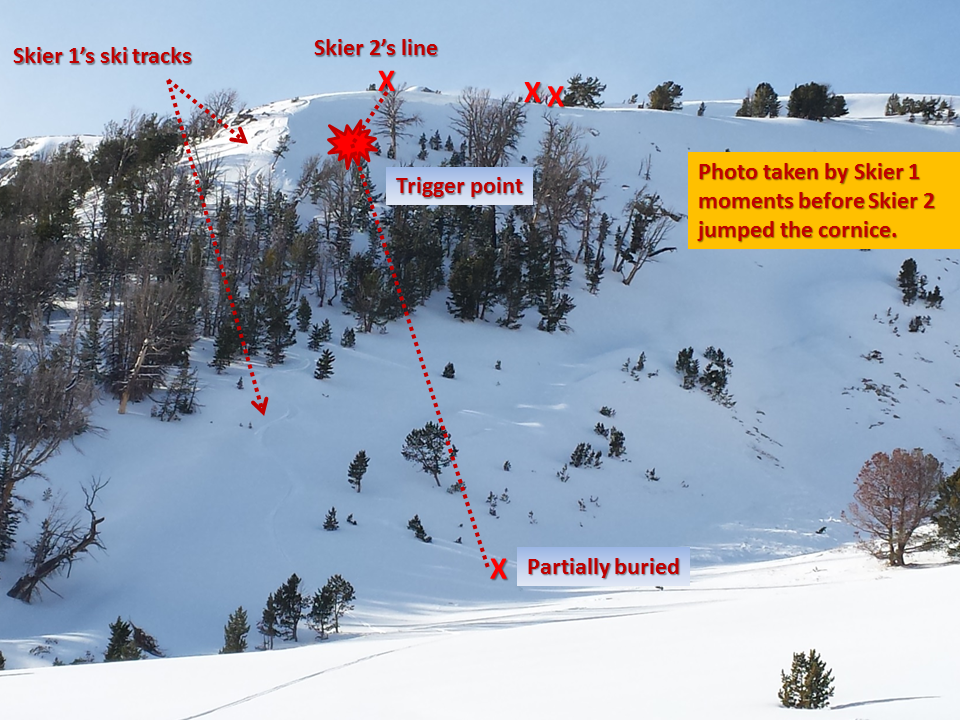Uncategorized
UPDATED: Cedar Basin avalanche claims life of YC patroller
Published
8 years agoon


By Joseph T. O’Connor EBS Managing Editor
BIG SKY – A Yellowstone Club ski patroller was recently killed in a Jan. 19 avalanche outside the ski area’s boundary in the northern Madison Range.
Poor snow stability due to early season cold temperatures and wind loading across the southwest Montana has led to numerous natural and human-triggered avalanches in recent weeks.
The Gallatin County Sheriff’s Office identified the victim as Darren Johnson, 34, of Big Sky, who succumbed to trauma-related injuries sustained after the slide near Cedar Basin carried him through a tight pocket of trees, according to a Jan. 20 Gallatin National Forest Avalanche Center advisory report.
Johnson, who had patrolled at the Yellowstone Club since 2010, and a fellow patroller were helping two Montana State University snow science program researchers collect data in the Cedar Basin area.
The foursome left the Yellowstone Club boundary at approximately 9 a.m. and traveled to the research site utilizing safe-travel techniques, according to Chris Bilbrey, one of the researchers as well as an avalanche safety instructor for the Friends of the GNFAC, a nonprofit dedicated to avalanche education and awareness in southwest Montana.
“We had had great group communication and made good travel decisions,” said Bilbrey, who also worked for
10 years as a ski patroller and assistant snow safety technician at Colorado’s Wolfe Creek Ski Area. “We achieved the work objective around 2:30 [p.m.] and decided as group how to get back to ski area, based on prevailing winds and other natural avalanche activity in the area.”The group agreed to ski one at a time down a south-facing, low-angle aspect back to the Yellowstone Club boundary. Bilbrey went first, and after stopping in a safe location below a stand of trees, signaled to the group to send the next skier.
“I looked up, and [Johnson] dropped into the far skiers’ right side of [the] bowl,” Bilbrey said. “He made [a] hard check turn to the right and the whole bowl propagated. It happened super quick.”
According to GNFAC Director Doug Chabot, the wind-loaded slope broke at a 2-4-foot crown approximately 300 feet wide, and slid 300 vertical feet, carrying Johnson about 50 feet through the trees.
“There were three feet of dense, windblown snow on top of a steep slope,” said Chabot, who conducted the avalanche investigation the following day along with MSU Snow Science Laboratory Director Jordy Hendrikx. “He was the trigger.”
Skiing a slightly different aspect of the same slope no matter how minor, according to Bilbrey, can have tragic consequences.
“I think it boils down to Darren getting on the wrong aspect and the wrong part of the slope,” Bilbrey said. “That’s the special variability of a mountain snowpack and that’s why we have to continue to pursue snow research.”
The rest of the group reached Johnson within 2-3 minutes, but found the patroller with a weak pulse and breathing intermittently. They radioed dispatch and began the rescue operation, which consisted of a Yellowstone Club ski patrol snowmobile towing him by toboggan to a flat area at the club where an air ambulance helicopter transported Johnson to the Big Sky Medical Center.
“Darren has been part of our Yellowstone Club family since November 2010 and we are devastated by this tragedy,” wrote Hans Williamson, Yellowstone Club general manager and vice president, in a Jan. 20 email to EBS. “Our thoughts and prayers are with his family and friends at this difficult time.”
In a heavy snow year with a weak layer, as much of the Rocky Mountain West is seeing this winter, Chabot


MSU snow science professor Jordy Hendrikx evaluates conditions in a snow pit dug beneath the cornice near the avalanche site.
“We have a really weak snowpack, and we’re cautioning people that it will take a long time for this layer to get strong again,” he said.
Hendrikx says it’s tragic when fatalities occur in the mountains, and this was a situation he wished would have gone differently. He says it’s also more reason to continue snow research, however. The study of snow and avalanches isn’t flawless.
Visit GNFAC’s website at mtavalanche.com for up-to-date snowpack conditions and avalanche forecasts.
Megan Paulson is the Co-Founder and Chief Operating Officer of Outlaw Partners.


Upcoming Events
april, 2024
Event Type :
All
All
Arts
Education
Music
Other
Sports
Event Details
We all are familiar with using a limited palette, but do you use one? Do you know how to use a
more
Event Details
We all are familiar with using a limited palette, but do you use one? Do you know how to use a limited palette to create different color combinations? Are you tired of carrying around 15-20 different tubes when you paint plein air? Have you ever wanted to create a certain “mood” in a painting but failed? Do you create a lot of mud? Do you struggle to achieve color harmony? All these problems are addressed in John’s workbook in clear and concise language!
Based on the bestselling “Limited Palatte, Unlimited Color” workbook written by John Pototschnik, the workshop is run by Maggie Shane and Annie McCoy, accomplished landscape (acrylic) and plein air (oil) artists,exhibitors at the Big Sky Artists’ Studio & Gallery and members of the Big Sky Artists Collective.
Each student will receive a copy of “Limited Palette, Unlimited Color” to keep and take home to continue your limited palette journey. We will show you how to use the color wheel and mix your own clean mixtures to successfully create a mood for your paintings.
Each day, we will create a different limited palette color chart and paint a version of a simple landscape using John’s directives. You will then be able to go home and paint more schemes using the book for guidance.
Workshop is open to painters (oil or acrylic) of any level although students must have some basic knowledge of the medium he or she uses. Students will be provided the book ($92 value), color wheel, value scale and canvas papers to complete the daily exercises.
Sundays, April 14, 21 and 28, 2024
Noon until 6PM.
$170.
Time
14 (Sunday) 12:00 pm - 28 (Sunday) 6:00 pm
Event Details
Please join the Arts Council of Big Sky for free music from Jacob Rountree at the Wilson Hotel Lobby Bar from 5-7 p.m.
Event Details
Please join the Arts Council of Big Sky for free music from Jacob Rountree at the Wilson Hotel Lobby Bar from 5-7 p.m. on April 24.
Jacob Rountree is an alternative/indie songwriter living in the stunning alpine of Montana. Contemplative yet playful, his lyric forward style is reflective of his love for philosophy, poetry and quantum physics.
Time
(Wednesday) 5:00 pm - 7:00 pm
Location
The Wilson Hotel
145 Town Center Ave
Event Details
Trivia from 7 to 9 p.m. at The Waypoint in Town Center. Participation is free, food and beverages available.
Event Details
Trivia from 7 to 9 p.m. at The Waypoint in Town Center. Participation is free, food and beverages available.
Time
(Wednesday) 7:00 pm - 9:00 pm
Location
The Waypoint
50 Ousel Falls Rd











